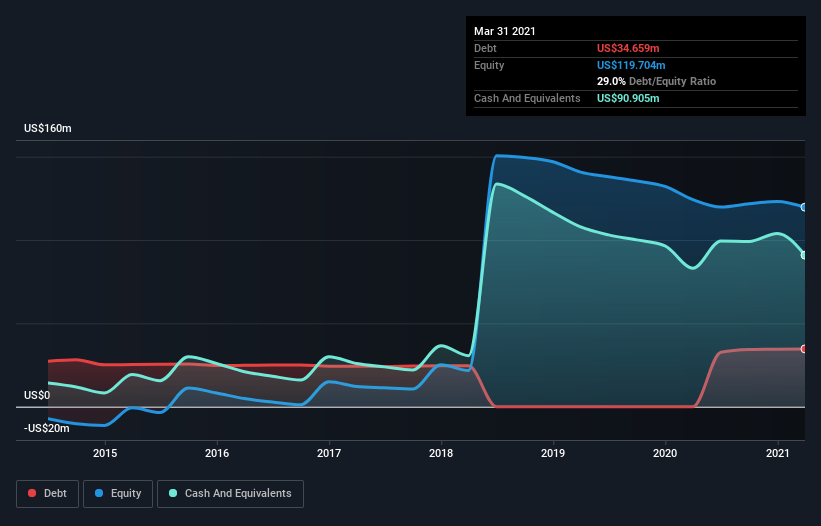Health Check: How Prudently Does AxoGen (NASDAQ:AXGN) Use Debt?
Legendary fund manager Li Lu (who Charlie Munger backed) once said, 'The biggest investment risk is not the volatility of prices, but whether you will suffer a permanent loss of capital.' So it seems the smart money knows that debt - which is usually involved in bankruptcies - is a very important factor, when you assess how risky a company is. We note that AxoGen, Inc. (NASDAQ:AXGN) does have debt on its balance sheet. But should shareholders be worried about its use of debt?
What Risk Does Debt Bring?
Generally speaking, debt only becomes a real problem when a company can't easily pay it off, either by raising capital or with its own cash flow. Part and parcel of capitalism is the process of 'creative destruction' where failed businesses are mercilessly liquidated by their bankers. However, a more common (but still painful) scenario is that it has to raise new equity capital at a low price, thus permanently diluting shareholders. By replacing dilution, though, debt can be an extremely good tool for businesses that need capital to invest in growth at high rates of return. When we think about a company's use of debt, we first look at cash and debt together.
View our latest analysis for AxoGen
How Much Debt Does AxoGen Carry?
As you can see below, at the end of March 2021, AxoGen had US$34.7m of debt, up from none a year ago. Click the image for more detail. However, its balance sheet shows it holds US$90.9m in cash, so it actually has US$56.2m net cash.
A Look At AxoGen's Liabilities
According to the last reported balance sheet, AxoGen had liabilities of US$22.3m due within 12 months, and liabilities of US$55.4m due beyond 12 months. On the other hand, it had cash of US$90.9m and US$19.8m worth of receivables due within a year. So it can boast US$33.1m more liquid assets than total liabilities.
This surplus suggests that AxoGen has a conservative balance sheet, and could probably eliminate its debt without much difficulty. Succinctly put, AxoGen boasts net cash, so it's fair to say it does not have a heavy debt load! The balance sheet is clearly the area to focus on when you are analysing debt. But ultimately the future profitability of the business will decide if AxoGen can strengthen its balance sheet over time. So if you're focused on the future you can check out this free report showing analyst profit forecasts.
Over 12 months, AxoGen reported revenue of US$119m, which is a gain of 11%, although it did not report any earnings before interest and tax. That rate of growth is a bit slow for our taste, but it takes all types to make a world.
So How Risky Is AxoGen?
Statistically speaking companies that lose money are riskier than those that make money. And the fact is that over the last twelve months AxoGen lost money at the earnings before interest and tax (EBIT) line. And over the same period it saw negative free cash outflow of US$33m and booked a US$22m accounting loss. While this does make the company a bit risky, it's important to remember it has net cash of US$56.2m. That kitty means the company can keep spending for growth for at least two years, at current rates. Even though its balance sheet seems sufficiently liquid, debt always makes us a little nervous if a company doesn't produce free cash flow regularly. When analysing debt levels, the balance sheet is the obvious place to start. However, not all investment risk resides within the balance sheet - far from it. We've identified 3 warning signs with AxoGen , and understanding them should be part of your investment process.
When all is said and done, sometimes its easier to focus on companies that don't even need debt. Readers can access a list of growth stocks with zero net debt 100% free, right now.
This article by Simply Wall St is general in nature. It does not constitute a recommendation to buy or sell any stock, and does not take account of your objectives, or your financial situation. We aim to bring you long-term focused analysis driven by fundamental data. Note that our analysis may not factor in the latest price-sensitive company announcements or qualitative material. Simply Wall St has no position in any stocks mentioned.
Have feedback on this article? Concerned about the content? Get in touch with us directly. Alternatively, email editorial-team (at) simplywallst.com.

